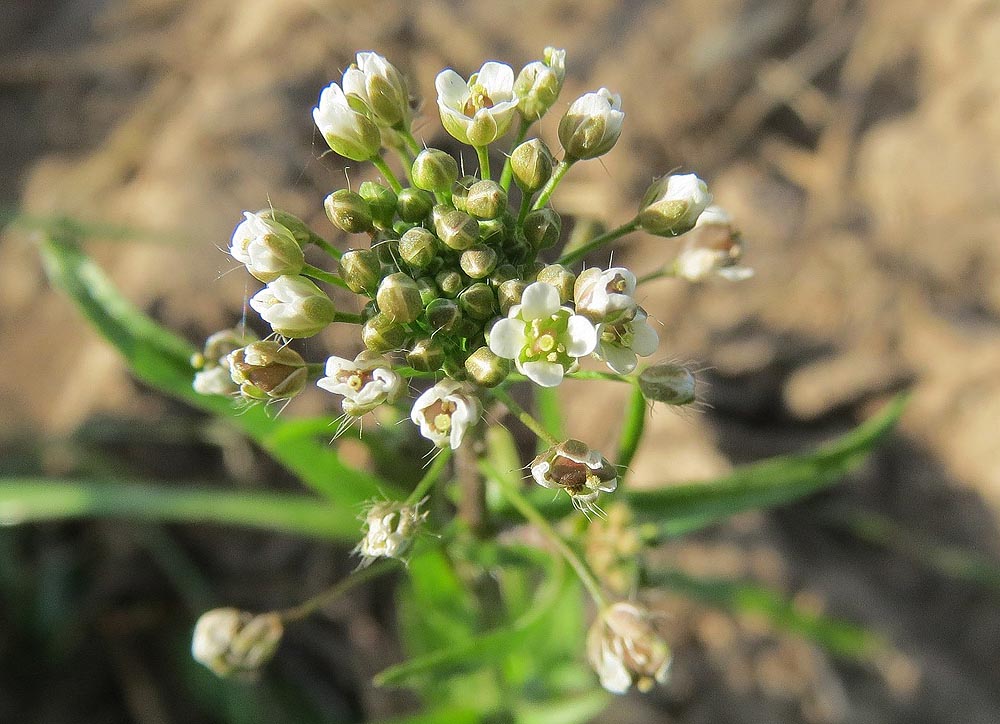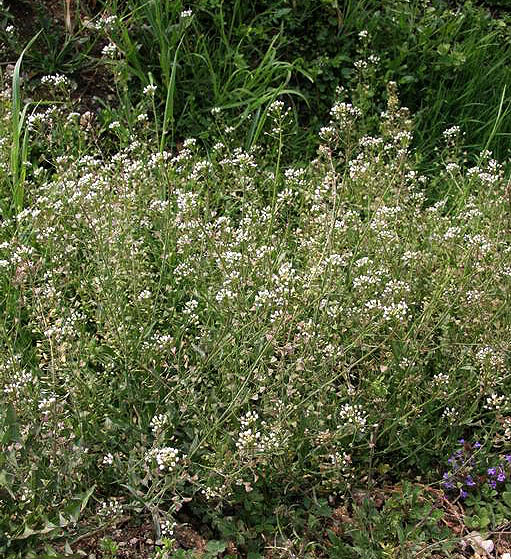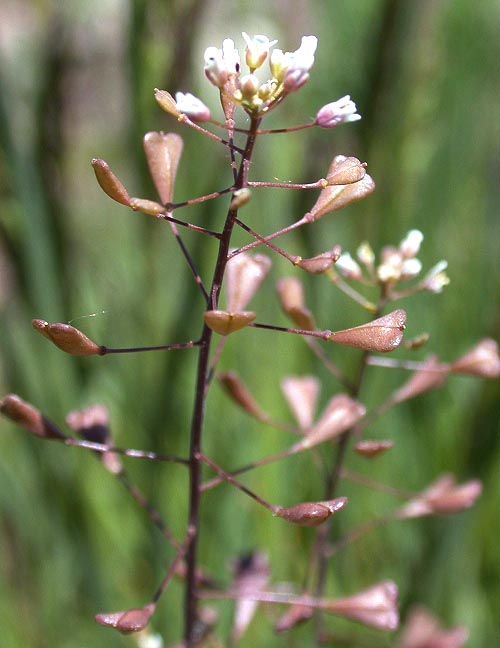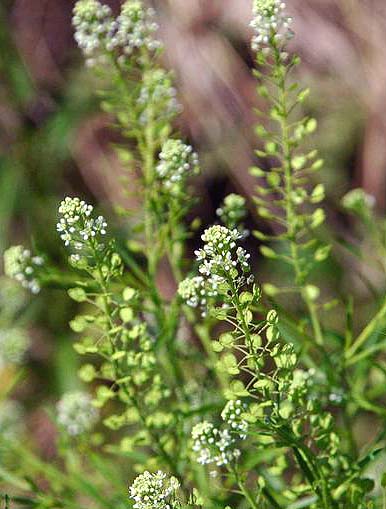Tough little annual in the mustard family is very versatile. While many may consider this plant a weed others cultivate it as edible greens. It is most prized in Asian cuisine but is just as useful in western dishes. It grows very quickly and if well cared for can be harvested in just over a month from seed. It grows almost anywhere and can tolerate drought and poor soils. It is not very heat tolerant so will need shade in warmer zones. Does best in spring and autumn temperatures in hotter zones. Cooler zones all year and in full sun. It is also very salt tolerant and will draw salts from the ground sweetening the soil for other plants. Its very easy to grow and can be constantly reseeded for continuous production.
From the center of the rosette rises a stiff reddish purple stem up to 30 inches (76cm) tall. This has leaves at the base of the stem only and those are alternate and mostly lance shaped. Flowers develop at the end of the stem continuously as the stem grows in height they may be single or branched Flowers are small and white sometimes tinged with pink, they are about 0.6 inches (15mm) across After flowering unique flattened heart shaped seed pods are produced. No other plant in the mustard family has these so it makes Shepherds purse easy to identify. Seed pods are continuously produced up the stem as the flowers progress. Most commonly this is during spring or fall seasons. Plants produce a central tap root with radiating secondary roots.
Growing Shepherd's-purse (Capsella bursa-pastoris) from Seed.
Seeds prefer light to germinate so do not cover. This is a cool season plant so it can be sown in autumn for early spring harvesting or started in pots in late winter for early harvest.
In spring direct sow as soon as the ground is workable. Clear and area of weeds and sow on the surface, protect from birds and keep moist. Plants are used to crowding so thinning is not necessary.
For early inside growing best grown in larger pots and harvested directly from there. Pots can be fairly shallow but not less than 8 inches (20.3 cm) deep and about 12 inches (30.4 cm) across. Fill with good potting soil. sow seeds on the surface and keep moist. If well cared for leaves should be ready to harvest in about 35-40 days from germination.
Can re-seed throughout the year if kept in a cool location that gets some full sun. Plants are not heat tolerant so does not do well in full sun locations during the summer in zones 6 and warmer. Autumn sown seeds may germinate and overwinter as a small rosette in zones 6-10 flowering early the following spring.
In zones 5 and above plants can be grown in full sun throughout the year in continuous rotation for constant crop. however they may not overwinter so early spring sowing will be required or start inside or in a hoop house.
Research has shown that plants do better in newly turned soil so it will need tilling rather than for no till agriculture which is likely to produce poorer results.
Very drought tolerant, once its growing it will tolerate little or now water. The leaves will be smaller and taste different from those in well tended soil but it will grow. Does not tolerate wet or waterlogged soils at all.
Plants are very salt tolerant especially for areas of marsh. They actually take up the salt and remove it from the soil making it more usable for plants that don't tolerate salt. If using for this reason ensure that all plants are carefully removed from the area and disposed of to avoid re introducing the salt.
The roots are sometimes used as a ginger substitute.
Seeds can also be eaten raw or cooked, they can be ground into meal but its very fiddly to harvest and process them and not really worth the effort.
Due to its blood control it should not be used in those with heart disease, high blood pressure, thyroid disorders or heavy internal bleeding. It should not be used during pregnancy or when breast feeding. Since it contains small amounts of oxalic acid it is not recommended for those with kidney stones or those prone to them.
mosquito killer. Place the seeds in a saucer of water, they exude their mucilaginous substance which attracts the mosquitoes and other small insects and they become trapped and partially digested. The substance can also be added to water to kill mosquito larva. However there are no reports on how it effects other organisms so adding it to water where there are fish or other organisms is not recommended.
Shepherds purse will absorb salt from soil thus removing it and 'sweetening' the soil for other plants. Care must be taken to remove all the Shepherds purse material and discard it elsewhere to avoid salts returning to the soil.









